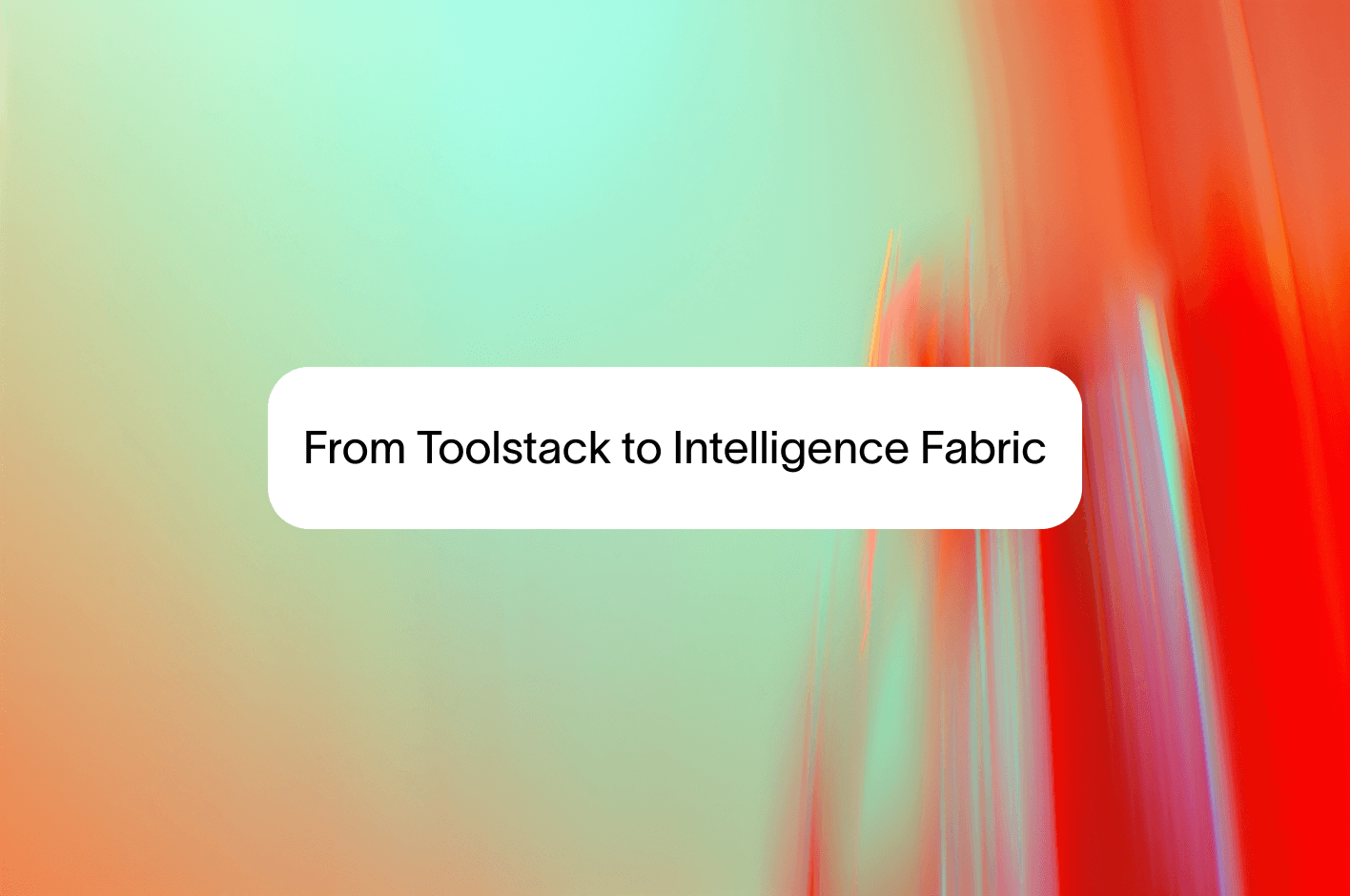Millions of calls distilled
into answers
Every Moment. One Intelligent Platform.
Know what's happening across every interaction. Spot patterns, act faster, and lead with confidence.






"Hear has been a transformative partner for Shift, revolutionizing the way we manage customer interactions. What used to be a manual, time-consuming effort is now automated, accurate, and insight-driven. With Hear, we’ve gained both operational efficiency and deeper call compliance and quality from our representatives."
– Yuval Danin, CEO at Shift
Your Data.
Our Priority.
Your data stays private, your trust protected. We follow strict security standards and keep our processes transparent. Non-negotiable for the teams who can’t afford compromises; and neither can we.
Our AI
Accuracy is our foundation. Our dual-model framework verifies every output before it reaches you, so you can make decisions with confidence.
Built for Smarter Contact Centers
Clarity built in. Keep your contact center running sharp.
Hear is truly amazing. The insights it provides go far beyond what I could have imagined before we started using it.



Hear has been a transformative partner for Shift, revolutionizing how we manage customer interactions. What was once a manual, time-consuming process is now automated, accurate, and insight-driven.



What we love most about Hear is how easy it is to use. Everything we need is right there. We can instantly see what customers are calling about, how our team is performing, and where we can improve.

.png)

Call Resolution
Completion trends, uncovered. See how every call wraps, and what that means for your team’s next move.
Call Issue Analysis
What’s getting in the way? Discover the top call blockers, so your team can fix what matters faster.
Compliance Tracking
Surfaces missed details in real time, helping teams close gaps, stay compliant, and avoid the backtracking that slows everyone down.
Call Resolution
Completion trends, uncovered. See how every call wraps, and what that means for your team’s next move.
Call Issue Analysis
What’s getting in the way? Discover the top call blockers, so your team can fix what matters faster.
Compliance Tracking
Surfaces missed details in real time, helping teams close gaps, stay compliant, and avoid the backtracking that slows everyone down.
Turn Conversation


Into Your
.svg)
Next Big Breakthrough
Connect with Hear’s experts and start turning insights into impact
Book a DemoCase studies
Stay updated
Make the most of AI- driven innovation for contact centers.

Rethinking AI Adoption in the Contact Center: From One Off Tools to Full System Intelligence
In the current wave of enterprise AI adoption, contact centers have become a primary testing ground. It’s where automation meets urgency, where customer sentiment meets real time execution. Yet most organizations approach AI as if they’re picking tools off a shelf adding one bot here, a sentiment tracker there, an agent assist tool in the middle. This approach offers quick wins, but yields limited transformation. The real potential of AI in the contact center does not lie in incremental tools. It lies in rethinking the system entirely.
To illustrate the point, consider a simple analogy: personal AI adoption.
The Image Generator vs. the AI Operating System
Imagine you discover a cutting edge AI image generator. It’s powerful, intuitive, and drastically reduces the time it takes to produce visual content. For marketing or design work, it’s a game changer. But it touches only one part of your daily workflow.
Now imagine adopting a multimodal tool like ChatGPT. It’s not confined to one domain; it assists with writing, summarizing, brainstorming, learning, decision making, coding, image generation, and more. Its value doesn’t lie in outperforming a single tool, but in improving everything you do. It doesn’t replace one skill; it elevates your entire baseline of capability.
This is the difference between AI as a tool and AI as a system of intelligence.
The same choice confronts contact center leaders today.
Incremental AI: The Comfortable Path to Minimal Disruption
The enterprise appetite for AI is growing, but the instinct to contain it is strong. It’s easier to frame AI as a bolt-on chatbot for FAQs, an agent assist plug-in for real time scripting, or a predictive routing module for better queue management. These point solutions offer local efficiency, but they rarely shift the organization’s intelligence frontier.
Why? Because their impact is compartmentalized. They streamline functions, not systems. A bot that reduces call volume by 10% is valuable, but if the underlying training, analytics, quality assurance, and managerial workflows remain unchanged, the operation continues to behave like a legacy system.
Incremental AI tools often create more fragmentation, not less. They produce disconnected data silos, demand additional human oversight, and rarely integrate seamlessly into existing strategic workflows. The ROI is real, but shallow.
Foundational AI: Building Intelligence into the Operating System
By contrast, foundational AI doesn’t aim to optimize a part; it aims to rewire the whole. It views the contact center not as a set of functions to automate, but as an interconnected network of people, conversations, workflows, and decisions, all of which are candidates for intelligence augmentation.
This approach allows AI to touch every layer of the contact center:
- Training & Onboarding: AI dynamically adapts learning content to each agent’s performance profile.
- Live Operations: Real time copilot tools adjust based on context, customer sentiment, and escalation thresholds.
- Routing & Workflows: Conversations are dynamically routed to human or AI agents based on complexity and skill match.
- Post Call Insights: AI performs 100% QA scoring, extracts trends, summarizes calls, and feeds back to both product and CX.
- Managerial Reporting: Data becomes queryable in natural language, and insight replaces intuition.
Here, AI is not a feature. It is the organizing principle of the contact center.
Strategic Costs of a Piecemeal Approach
The hidden downside of incremental AI adoption is the operational tax it imposes. When AI tools are introduced in isolation:
- Integration debt accumulates. Each new tool demands its own data pipeline, governance layer, and training protocol.
- Context is lost between systems. A bot may know what the customer asked, but the agent may not know how the bot responded.
- Managerial complexity rises, not falls. Human supervisors end up managing not just agents, but the misalignment between fragmented tools.
Perhaps most critically, this approach reinforces the old paradigm: humans are the glue that holds the system together. In a truly intelligent contact center, that role is played by AI itself, managing AI, monitoring human performance, and continuously optimizing the orchestration of both.
From Toolstack to Intelligence Fabric
What’s needed is a shift from assembling a toolstack to constructing an intelligence fabric, a layer of AI that permeates the entire contact center, learning from every interaction, optimizing every touchpoint, and surfacing insights across every function.
This is not about replacing humans. It’s about eliminating friction, freeing human potential, and designing an environment where both people and AI can perform at their best. When AI is applied systemically, it doesn’t just make the contact center more efficient. It makes it self-improving.
Rethinking the Implementation Playbook
This reframing demands a new kind of implementation strategy. Instead of asking “Where can AI help?” we must ask:
“What would this operation look like if it were AI native from the ground up?”
- What workflows would disappear?
- What data would become instantly actionable?
- What roles would shift from supervision to strategy?
Most importantly:
What becomes possible when intelligence is no longer something we add to the edges of the system, but something we embed at its core?
AI Is Not the Upgrade; it’s Your New Foundation
The contact center is no longer a place to patch with point solutions. It’s a strategic nerve center for customer insight, brand experience, and operational excellence. Adding AI incrementally is tempting; it promises improvement with minimal disruption. But only by embracing AI holistically can we unlock the full potential of automation, intelligence, and human-machine collaboration.
In a world moving this fast, the future belongs not to those who adopt AI, but to those who rearchitect around it.

Revenue Leakage Exposed: Your Support Center is a Gold Mine
Most contact centers are actively bleeding revenue through missed upsells and silent churn. While you rely on manual sampling, your competitors are using AI to capture value from 100% of conversations.
- The Cost Center Fallacy
- Silence is Expensive (and Predictable)
- Architecting Revenue Defense
- Evolve or Fade
Your P&L has a hole in it. While leadership scrutinizes marketing spend and sales cycles, a massive stream of revenue is quietly draining out of your contact center. Walk into most operations today and you see teams optimized for speed. They chase Average Handling Time (AHT) while ignoring the gold mine of intelligence flowing through their headsets.
This is not an operational oversight. It is strategic negligence. Every customer interaction holds a binary potential: it either builds equity or erodes it. If you are still relying on random call sampling, you are blind to 98% of these pivotal moments. The market leaders are not just answering phones anymore. They are orchestrating a shift from cost center to revenue engine.
The Cost Center Fallacy
The probability of selling to an existing customer is 60-70%, compared to just 5-20% for a new prospect. Yet, most support agents are trained to resolve tickets, not recognize buying signals. A customer mentions a life change, a new business need, or a dissatisfaction with a competitor. In a manual environment, these moments vanish the second the call ends.
This is where revenue leakage accelerates. Without comprehensive customer intelligence, you miss the context that drives conversion. Forward-thinking organizations have stopped treating support calls as administrative burdens. They utilize AI to surface missed cross-sell and upsell opportunities instantly. If your system cannot flag a buying signal in real-time, you are effectively handing that revenue to a competitor who can.
Silence is Expensive (and Predictable)
Churn does not happen abruptly. It broadcasts itself in tone, hesitation, and specific keywords weeks before a cancellation. The problem is that traditional QA—listening to 1% of calls—is a statistical gamble you will always lose. You cannot fix what you do not hear.
Silent attrition is the killer of profitability. Customers rarely scream before they leave; they express subtle frustration that manual monitoring misses. By the time a formal cancellation request comes through, the opportunity to save the account has dropped to near zero. Deploying predictive analytics for churn transforms this dynamic. It moves you from autopsy to intervention. Identifying at-risk customers based on 100% of their interaction history allows retention teams to act while the customer is still listening.
Architecting Revenue Defense
Fixing this requires a systems mindset. You cannot patch a leaking dam with a chaotic mix of spreadsheets and subjective supervisor feedback. You must rewire the operation to be AI-native. This means deploying an architecture that analyzes every second of every call, categorizing intent and sentiment without human fatigue.
Consider the operational impact of total visibility:
- Real-time alerts replace weekly reports.
- Objective data replaces gut-feel coaching.
- Revenue signals are routed to sales teams automatically.
Companies utilizing Hear.ai to monitor these metrics have seen a 30% increase in conversion rates on identified opportunities. This is not magic. It is simply the result of removing blind spots. When you stop guessing, you start growing.
Evolve or Fade
The era of the reactive contact center is over. The technology to capture every dollar of value from your customer conversations exists, and your competitors are likely already implementing it. You can continue to let revenue leak through the cracks of manual processes, or you can architect a system that turns every conversation into a strategic asset.
Do not wait for the quarterly report to show you what you missed.

The Real Benefits of AI Summarization in Contact Centers
With Hear’s AI Summarizer, contact centers turn long calls into concise, structured summaries instantly.”
So much data, so little time.
Every day, contact center agents handle a flood of customer interactions, each packed with valuable information that often gets buried in post-call notes or lost in manual reporting. Between documenting calls, updating CRMs, and keeping up with performance targets, there’s little room left for what matters most: the customer.
That’s where AI summarization changes everything. With tools like Hear’s AI-powered Summarizer, contact centers can instantly transform long, complex interactions into concise, structured summaries that capture every key point without manual effort.
The result? Agents spend less time on after-call work, managers gain real-time visibility, and operations become more efficient while customer satisfaction rises.
The Science Behind Hear’s AI Summarization
At its core, AI summarization uses natural language processing (NLP) and speech recognition to listen, understand, and condense conversations into clear, actionable insights.
When a customer interaction begins, whether by phone, chat, or video, Hear’s AI listens in real time. It transcribes the full exchange, identifies intent, key actions, and outcomes, and analyzes tone and sentiment throughout.
After the call, Hear’s model instantly generates a summary that includes:
- The reason for the customer’s contact
- The issue or request discussed
- The resolution or next steps
- Follow-ups or commitments made
- Sentiment and emotion cues
Because this process is fully automated, agents no longer need to type out notes or fill in long forms. The summaries integrate directly into the CRM or QA system, saving time and reducing the risk of human error.
And thanks to machine learning, Hear continuously improves by learning company-specific terminology, product names, and service nuances to ensure summaries are always accurate, relevant, and aligned with your brand’s voice.
With Hear, every customer conversation becomes a structured insight that your teams can instantly analyze, act on, and learn from.

Common Benefits of AI Summarization in Contact Centers
Implementing AI summarization is one of the fastest ways to modernize your contact center. It doesn’t require a complex rollout or long onboarding process, just plug it in and watch efficiency rise.
Here’s how teams typically benefit from Hear’s summarization capabilities:
Reduces after-call work
Agents can cut up to a minute of admin time per call, freeing them to handle more interactions or spend extra time resolving issues effectively.
Boosts compliance and accuracy
By automatically capturing and structuring every detail, summaries ensure nothing is missed, improving both regulatory compliance and record accuracy.
Improves quality assurance
Supervisors can review summaries instead of entire transcripts, allowing faster QA cycles and more comprehensive coverage of all interactions.
Streamlines reporting and analytics
Because summaries feed directly into Hear’s interactive dashboard, performance tracking and trend analysis become seamless.
Enables faster onboarding
New agents can review high-quality summaries from top performers to learn patterns, phrasing, and best practices, shortening the ramp-up period.
Hear’s summarization helps contact centers turn every conversation into measurable data and every minute saved into a better experience.
The Hidden Benefits You Might Not Expect
Beyond productivity and accuracy, AI summarization has deeper advantages for your people and your operations.
Let’s explore what often goes unnoticed but makes all the difference.
Hidden Benefits for Agents
1. Less Stress, Less Burnout
Manual note-taking and repetitive forms are mentally draining. Hear removes that burden, allowing agents to focus entirely on the customer. With less pressure to multitask, they stay present, engaged, and less prone to burnout.
2. Better Focus, Better Calls
Agents who aren’t distracted by administrative tasks listen more attentively and empathize more effectively. Hear’s instant summaries mean they can dedicate their full attention to each caller, improving both service quality and first-call resolution rates.
3. Confidence Through Consistency
Every call automatically documented means agents have full visibility into their performance. Instead of waiting for occasional feedback, they can review summaries, identify patterns, and take ownership of their progress.
Empowered agents deliver better conversations, and better conversations build stronger customer relationships.
Hidden Benefits for Managers
1. Data-Driven Coaching
Hear’s summaries aggregate call data into clear patterns. Managers can instantly spot gaps in product knowledge, compliance issues, or behavioral trends, making feedback more targeted and actionable.
2. Continuous Visibility
With structured summaries across every agent, managers don’t need to manually audit random samples. They get a holistic view of the entire team’s performance in minutes, not days.
3. Discovery of Growth Opportunities
By analyzing summaries at scale, managers can uncover hidden themes in customer conversations such as new upsell opportunities, recurring complaints, or process inefficiencies that would otherwise go unnoticed.

Hidden Benefits for Operations
1. Compliance and Risk Management
Hear automatically detects and flags potential compliance risks. Its summaries include key phrases, actions, or omissions that may require follow-up, helping teams prevent issues before they escalate.
2. Seamless Data Flow
Summaries feed directly into CRMs, QA dashboards, and reporting tools. This creates a continuous flow of structured information that drives decision-making across the organization.
3. Operational Efficiency
Every minute saved on manual reporting is a minute reinvested in improving customer experience. Over time, those small savings compound into significant cost reductions across the contact center.
4. Improved CX and Retention
When agents are less overwhelmed and managers more informed, customers feel it. Shorter calls, faster resolutions, and more personalized interactions lead to measurable improvements in satisfaction and loyalty.
AI summarization doesn’t just make operations faster, it makes them smarter.
Why Hear’s Summarization Stands Out
Not all summarizers are built for the complexity of a contact center. Many generic tools capture words but miss context. Hear’s solution is designed specifically for customer intelligence, with contact-center workflows at its core.
Hear’s differentiators:
- Purpose-built for contact centers, handling multi-speaker audio, real-time dialogue, and dynamic scripts
- Custom summary formatting, letting teams choose structure and tone based on their use case
- Privacy-first architecture with automatic redaction of sensitive data for full compliance
- Seamless integrations with systems like Genesys Cloud, Zendesk, and Salesforce
- Part of a larger intelligence ecosystem that includes sentiment analysis, agent scoring, and proactive alerts
Hear doesn’t just summarize conversations, it turns them into intelligence that drives action.

The Bigger Picture: From Summaries to Strategy
AI summarization is often the first step toward broader AI transformation. Once call data is structured and searchable, organizations can start uncovering insights that reshape how they operate, from customer sentiment to agent performance trends and business opportunities.
With Hear, your contact center evolves from a cost center into a strategic value hub where every interaction fuels better decisions, smarter automation, and stronger results.
Get Started with Hear
Adopting AI summarization is simpler than you think and more rewarding than you imagine.
With Hear, you can:
- Save hours of manual work every week
- Improve compliance accuracy
- Boost agent satisfaction and performance
- Turn conversation data into a real business advantage
See how Hear transforms your contact center from reactive to proactive.
Book your free demo today and experience AI summarization that truly listens, learns, and delivers.

Call Center Monitoring: Why It Matters, and How to Get It Right
Optimize your call center operations with effective monitoring. Learn about metrics, best practices, and advanced tools that enhance quality, compliance, and customer care.
The success of any call center hinges on two elements: agent performance and service quality.
These metrics provide valuable insights into your call center operations, highlighting inefficiencies and opportunities for improvement. But how do you measure these metrics?
Well, that’s where call center monitoring comes in, giving you a clear picture of your call quality, agents’ abilities, and overall performance. With effective monitoring, you may also be able to maintain a strong customer satisfaction score (between 75% to 85%).
In this guide, we cover more benefits of call center monitoring, the metrics to track, and the best software to use.

What is Call Center Monitoring?
Call center monitoring involves tracking and analyzing data and analytics to enhance customer experience (CX), improve agent performance, and drive business outcomes beyond basic compliance.
This systematic process involves:
- Setting clear and reasonable objectives
- Using tools to collect and analyze data
- Creating a feedback loop to implement changes
- Empowering agents through targeted training
When done right, it helps identify and address pain points in the customer experience, preventing frustrations and simplifying agents’ work. This is particularly important given that up to 63% of consumers believe companies need to listen more to their feedback.
The process also offers valuable insights into your agent performance, call center operations, and customer sentiment. Using these insights, managers can make appropriate decisions about agent training, resource allocation, and business investment.
Key Benefits of Call Center Monitoring
When you have the right tools and strategies, call center quality monitoring offers multiple benefits to your business, including:
- Better customer experience: Reviewing calls and customer interactions helps address frustrations, reduces wait times, and ensures personalized support, resulting in happier customers.
- Enhanced agent performance: Agent evaluations and regular feedback pinpoint areas for skill improvement, allowing managers to design targeted training programs and create an effective call center agent scorecard to boost performance.
- Data-driven insights: Call monitoring tools generate powerful analytics and reports to support data-driven decisions on training, staffing, and process improvements.
- Enhances compliance: Monitoring helps managers ensure agents adhere to scripts, policies, and legal guidelines, supporting regulatory compliance and reducing risks.
- Cost-savings and efficiency: Data-driven insights enable managers to improve resource allocation and optimize workflows, boosting cost-savings and efficiency.
Call monitoring allows businesses to ensure that employees adhere to protocols and deliver timely support, creating a consistent customer experience that drives positive outcomes.

The Importance of Call Center Monitoring
In call centers, a common target for managers is answering 80% of calls within 20 seconds (80/20). While this may seem feasible for small call centers, it’s a different story for those handling over 100 calls a day.
But with the right strategy, it’s possible, and that’s where call center monitoring comes into play.
Real-time monitoring in call centers provides managers with immediate visibility into agent performance, customer experience, existing workflows, and operational capabilities. They can easily pinpoint issues, such as dropped calls and poor bandwidth, and implement effective fixes.
It provides insights for training purposes, enabling improvements in performance, efficiency, and productivity across the board. These insights are vital in offering targeted, personalized feedback to help agents, empowering them to be more helpful, empathic, and responsive to customers.
The outcome? Improved customer experience, better operational efficiency, and data-driven decision-making.

Types of Call Center Monitoring
There are several methods or types of call center monitoring you can use to track and assess your call center’s performance, agents' abilities, and call quality, including:
- Call recording software: You can also tape all calls made to your company to provide a comprehensive record for analysis, training, and evaluation.
- Workforce management software: This software gives managers tools to support agents in real-time, such as assisting during live calls, evaluating performance, and reviewing the effectiveness of call scripts.
- Speech analytics: This monitoring type delves into call content, extracting valuable data, such as the emotion, intent, and sentiment analysis of every customer.
- Automatic call scoring: You can use software to monitor and score each call an agent completes to gather data on agent performance and customer experience.
While you can deploy these methods individually, a comprehensive call monitoring platform offers all of them under one roof. You can use them at will to gain invaluable insights and optimize workflows for a seamless call center performance.

How Call Center Monitoring Works
Call center monitoring works by observing customer and agent interactions in real-time or reviewing call recordings to assess call quality, agent performance, and adherence to standards.
It involves using various tools, such as manual listening, call recording software, or AI-powered speech analytics.
The process has three major steps:
- Data collection: Managers and quality assurance teams gather data from various sources through screen monitoring, call recording, live listening, speech analytics, and customer surveys.
- Evaluation and analysis: The collected data is analyzed to assess several aspects of call center operations, such as agent performance, call quality, customer sentiment, compliance, and efficiency.
- Feedback and improvement: Managers use the insights from the analysis to make informed decisions and drive improvements through training, coaching, process refinement, and performance optimization.
The process also involves multiple roles, which vary from one call center to another. For instance, some call centers use managers or supervisors while others rely on quality assurance specialists to track and monitor all operations.
In large operations, data analysts may also play a key role, interpreting metrics, providing insights to support continuous improvement, and helping CX teams unlock the benefits of speech analytics.
How Hear Approaches Call Center Monitoring
Call center monitoring is not just about listening in on calls and giving feedback. With the right software, it becomes a powerful method for uncovering actionable business intelligence and streamlining workflows.
And that’s what we offer at Hear, a next-generation call center monitoring system designed for 100% interaction coverage across channels and AI-powered, real-time monitoring.
Hear streamlines the monitoring process, whether you handle 10 or 100 calls a day. Our platform offers:
- Compliance monitoring: Hear uses agentic AI to evaluate calls, ensuring compliance and minimizing risk.
- Automated quality assurance: Our system scores 100% of customer interactions against predefined criteria to ensure high-quality interactions.
- Deep customer insights: Hear supports natural language processing (NLP) to detect customer sentiment and churn signals, enabling you to improve customer experience and retention.
- Agent performance evaluation: Our solution features an automated agent evaluation tool for faster onboarding and accurate performance insights.
- Advanced reporting: Hear generates smart summaries for every interaction to provide insights and reports that guide your team.
- Seamless API integration: The software provides API integrations to extend functionality and enable custom connections to drive automation.
With Hear, you get a unified central platform for tracking every interaction, spotting patterns, and making confident, data-driven decisions.
For instance, the call issue analysis feature helps you identify the top call blockers and quickly resolve the problems that hamper productivity. Also, the dual-LLM framework delivers reliable AI output, simplifying QA scoring, compliance flagging, and sentiment analysis.
Want to learn more? Request a demo to see how Hear’s data dashboards simplify call center monitoring.

Key Metrics to Track in Call Center Monitoring
Call center monitoring isn’t helpful if you don’t know what to track; in fact, you’d be flying blind, leading to errors, missed opportunities, and constant challenges.
Instead, there are certain metrics you can track to understand your call center performance and operations, including:
- First call resolution rate (FCR): This metric measures the percentage of customer issues resolved on the first call, without follow-ups, callbacks, or call transfers.
- Average handle time (AHT): This shows the total time an agent spends on a customer call, including hold time, talk time, and after-call work.
- Call abandonment rate: This represents the percentage of callers who end calls before speaking with an agent.
- Escalation rate: This is the percentage of customer calls or interactions that require intervention from a manager or higher-tier support.
- Customer satisfaction score (CSAT): This shows how satisfied a customer is with a service interaction.
- Net promoter score (NPS): This measures a customer’s loyalty and their likelihood to recommend your company.
Each of these metrics is crucial in evaluating your agent performance and call center operations. They can help you pinpoint issues and address them before they escalate, improving call center quality assurance, agent engagement, and customer experience.
Best Practices for Call Center Monitoring
You can ensure impactful call center monitoring by implementing best practices that support cohesion and motivate your team.
These include:
- Setting clear KPIs that align with business goals for seamless tracking.
- Monitoring calls regularly to assess agent performance and identify issues.
- Providing continuous agent training to fill knowledge gaps and support career development.
- Investing in effective call center monitoring systems to simplify the process and optimize operations.
- Promoting transparency and feedback to create a transparent workplace culture.
The above best practices can help you maximize the impact of your call quality monitoring efforts, creating a collaborative, supportive, and holistic environment for agents to thrive.

Frequently Asked Questions (FAQs)
Here are answers to common questions we encounter from our users:
How Does Call Center Monitoring Differ From Call Center Analytics?
Call center monitoring is about observing agent activities and call quality to ensure smooth operations and compliance.
Call center analytics, on the other hand, involves processing data to uncover deeper insights, patterns, and trends that inform strategic decisions.
What is the Difference Between Passive and Active Call Monitoring?
Passive call monitoring means observing customer interactions without disrupting or altering the calls.
Active call monitoring is more hands-on, as it involves intervening in calls, providing feedback, or even taking over a live call.
Can Call Center Monitoring Improve Employee Retention?
Yes, call center monitoring enables managers to identify issues agents experience, provide timely coaching, recognize high performers, and prevent agent burnout, improving employee engagement and retention.
Conclusion
Effective call center monitoring offers significant value — customers who receive a great experience are likely to make additional purchases or recommend your business.
So, every call is an opportunity to offer value to customers and gain invaluable insights into your call center operations. To that end, you must deploy the right call monitoring system to track KPIs, gather data, and evaluate agents.
That’s where Hear excels, offering a central AI-powered platform that streamlines call monitoring, agent performance evaluation, and compliance tracking. It also provides seamless API integration and advanced reporting tools to centralize your operations.
Ready to harness the power of call center monitoring? Book a demo to discover how Hear’s 100% interaction coverage simplifies the process.
"The system is truly amazing. The insights it provides go far beyond what I could have imagined before we started using it."
– Nethanel Avni, Contact Center Manager at Cellcom

